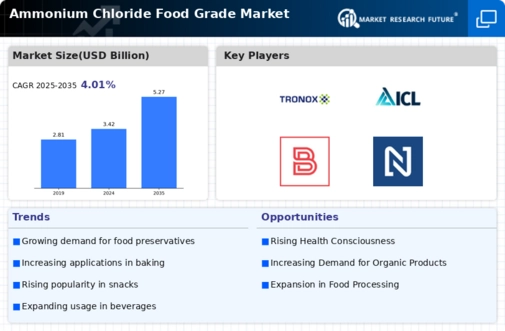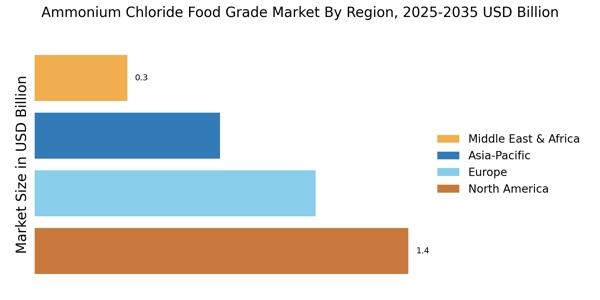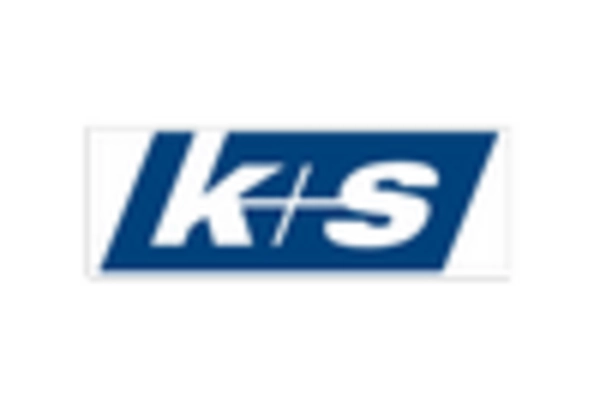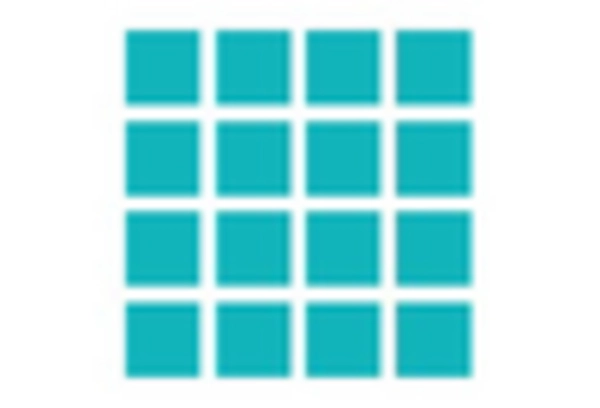Expansion of the Bakery Sector
The Ammonium Chloride Food Grade Market is significantly influenced by the expansion of the bakery sector. Ammonium chloride is commonly utilized as a leavening agent in various baked goods, contributing to texture and volume. Recent market analysis suggests that the bakery industry is set to grow at a rate of 3.8% annually, driven by changing consumer lifestyles and preferences for convenient food options. This trend is likely to bolster the demand for ammonium chloride, as manufacturers aim to enhance the quality of their products. The increasing popularity of artisanal and specialty baked goods further underscores the importance of ammonium chloride in achieving desired baking characteristics, thus supporting market growth.
Increasing Use in Food Processing
The Ammonium Chloride Food Grade Market is experiencing a notable increase in demand due to its extensive application in food processing. This compound serves as a food additive, enhancing flavor and acting as a preservative. The market data indicates that the food processing sector is projected to grow at a compound annual growth rate of approximately 4.5% over the next five years. This growth is driven by the rising consumer preference for processed foods, which often require additives like ammonium chloride to maintain quality and safety. As food manufacturers seek to improve product shelf life and taste, the role of ammonium chloride becomes increasingly vital, thereby propelling the market forward.
Regulatory Support for Food Additives
The Ammonium Chloride Food Grade Market is positively influenced by regulatory support for food additives. Governments and food safety authorities are increasingly recognizing the importance of safe food additives, including ammonium chloride, in maintaining food quality and safety. Recent regulatory frameworks have been established to ensure that food additives meet safety standards, which in turn fosters consumer confidence. This regulatory support is likely to encourage food manufacturers to utilize ammonium chloride more extensively, as compliance with safety regulations becomes a priority. Consequently, this driver is expected to contribute to the growth of the ammonium chloride market in the food sector.
Rising Health Consciousness Among Consumers
The Ammonium Chloride Food Grade Market is also shaped by the rising health consciousness among consumers. As individuals become more aware of their dietary choices, there is a growing demand for food products that are both safe and nutritious. Ammonium chloride, recognized for its role in food safety and preservation, aligns with these consumer preferences. Market data indicates that health-oriented food products are expected to see a growth rate of around 5% in the coming years. This trend encourages food manufacturers to incorporate ammonium chloride in their formulations, as it helps in maintaining product integrity while meeting health standards. Consequently, this driver is likely to enhance the market's trajectory.
Technological Advancements in Food Production
The Ammonium Chloride Food Grade Market is benefiting from technological advancements in food production processes. Innovations in food technology are enabling more efficient and safer methods of incorporating ammonium chloride into food products. These advancements not only improve the quality of food but also enhance production efficiency, which is crucial in a competitive market. Recent studies suggest that the adoption of new technologies in food manufacturing could lead to a reduction in production costs by up to 15%. As food producers increasingly leverage these technologies, the demand for ammonium chloride is expected to rise, thereby positively impacting the market.

















